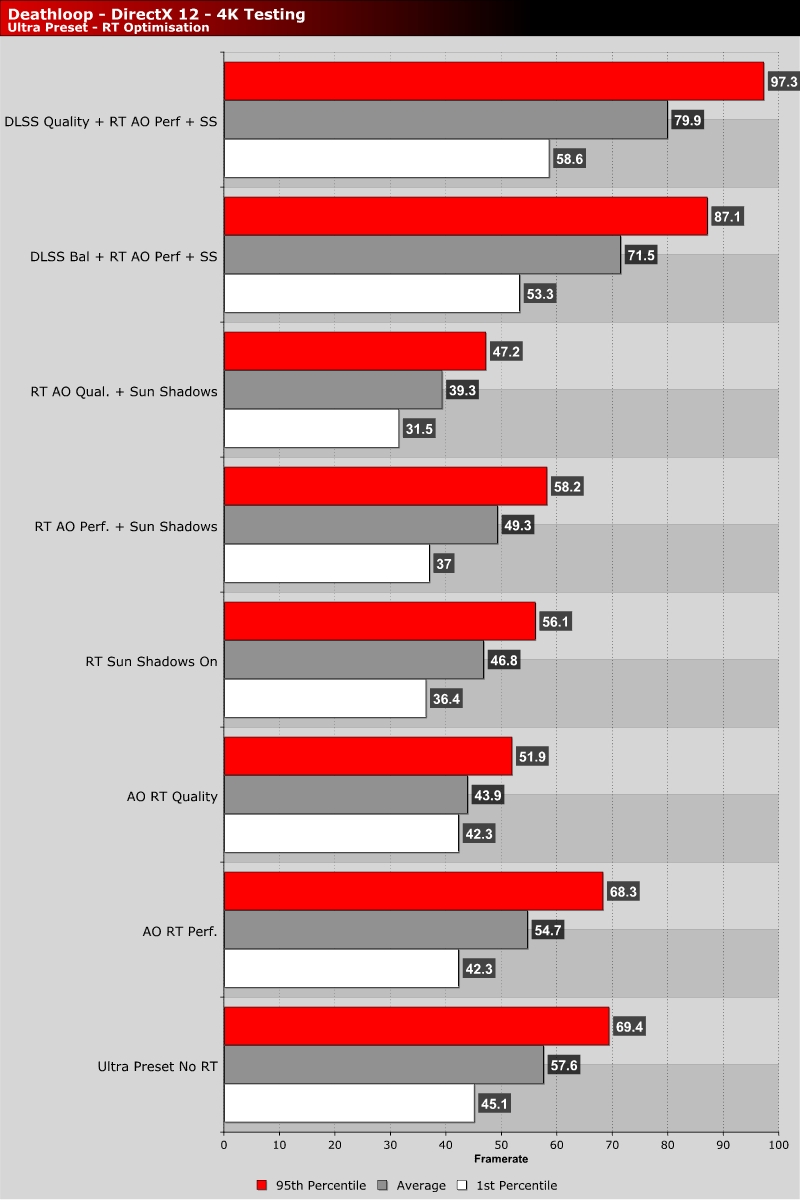Deathloop Patch 1 Tested – DLSS VS FSR and More
Â
Ray Tracing Retested – Does Deathloop run much better?Â
While Deathloop’s latest patch promises “Improved performance and stability, especially with ray tracing”, our data showcases little to no performance difference between Deathloop’s launch day and Patch 1 builds. As such, Deathloop players shouldn’t expect much higher framerates when playing this new patched version of the game. That said, this patch is much smoother now that the game’s stuttering issues are apparently fixed. Beyond that, the game can now be played at up to 240 FPS, which wasn’t the case before now.Â
Like what we said in our previous PC optimisation guide for Deathloop, the game’s ray tracing modes run best when the game’s RT Ambient Occlusion (AO) is set to performance and the game’s sun shadows are enabled. This gives PC gamers access to all of the game’s ray-traced effects while maximising performance. That said, Ambient Occlusion’s performance mode does present graphical issues when interacting with Deathloop’s grass and foliage. That said, these downsides are only present when the player isn’t moving.Â
Â
Instead of using FSR, this time we decided to use Nvidia’s DLSS technology to boost Deathloop’s PC performance. Below we can see the results, with DLSS enabling higher performance levels with ray tracing than without ray tracing or DLSS enabled. DLSS makes ray tracing viable in Deathloop, and unlike FSR, it doesn’t add more blur to the game.Â



